The CIA & the New Critics
A fascinating piece in this week’s TLS : a review by Terence Hawkes of Michael Holzman’s book JAMES JESUS ANGLETON, THE CIA, AND THE CRAFT OF COUNTERINTELLIGENCE, a work that tries to tease out the influences of the New Critics & especially that of Empson’s 7 Types of Ambiguity on James Angleton & Norman Holmes Pearson. Below, an extract of the review; you can read the complete article here.
Holzman’s brisk, uncluttered book offers valuable access to previously untapped material on Angleton, who became the first head of the Counter-intelligence Staff of the CIA. In particular, it makes incisive use of his years as a student of English at Yale and the influence on him of the New Critics and modernist poets of his day. Previous biographers such as Robin Winks have pointed out that at Yale he was co-editor of the literary journal Furioso. But Holzman takes a more spirited line, publishing two of Angleton’s grating undergraduate poems and a list of his correspondence with writers such as T. S. Eliot, W. H. Auden, I. A. Richards, William Empson, Ezra Pound and Louis MacNeice. These famous poets all “took this young man very seriously” and he, in return, was greatly impressed by their writings, particularly the book that became a crucial text of New Criticism, Empson’s Seven Types of Ambiguity. For Empson, ambiguity is the central aspect of language. Not a minor stylistic flourish, it is an unavoidable linguistic feature permanently in place and in effect seems to exploit the fundamental characteristics of language itself. This means that “opposite” meanings will always illuminate and invade the primary meanings of ordinary words, so that “in a sufficiently extended sense any prose statement could be called ambiguous”. Thus, Empson argues, a word may have several distinct meanings; several meanings connected with one another; several meanings which need one another to complete their meaning; or several meanings which unite together so that the word means one relation or one process . . . what often happens when a piece of writing is felt to offer hidden riches is that one phrase after another lights up and appears as the heart of it; one part after another catches fire.

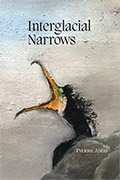 “Interglacial Narrows (Poems 1915-2021)” Contra Mundum Press
“Interglacial Narrows (Poems 1915-2021)” Contra Mundum Press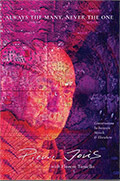 “Always the Many, Never the One: Conversations In-between, with Florent Toniello” Contra Mundum Press
“Always the Many, Never the One: Conversations In-between, with Florent Toniello” Contra Mundum Press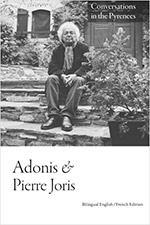 “Conversations in the Pyrenees”
“Conversations in the Pyrenees”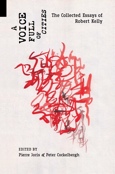 “A Voice Full of Cities: The Collected Essays of Robert Kelly.” Edited by Pierre Joris & Peter Cockelbergh
“A Voice Full of Cities: The Collected Essays of Robert Kelly.” Edited by Pierre Joris & Peter Cockelbergh “An American Suite” (Poems) —Inpatient Press
“An American Suite” (Poems) —Inpatient Press “Arabia (not so) Deserta” : Essays on Maghrebi & Mashreqi Writing & Culture
“Arabia (not so) Deserta” : Essays on Maghrebi & Mashreqi Writing & Culture “Barzakh” (Poems 2000-2012)
“Barzakh” (Poems 2000-2012) “Fox-trails, -tales & -trots”
“Fox-trails, -tales & -trots”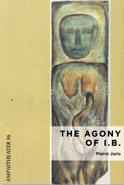 “The Agony of I.B.” — A play. Editions PHI & TNL 2016
“The Agony of I.B.” — A play. Editions PHI & TNL 2016 “The Book of U / Le livre des cormorans”
“The Book of U / Le livre des cormorans”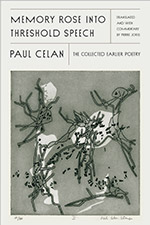 “Memory Rose Into Threshold Speech: The Collected Earlier Poetry of Paul Celan”
“Memory Rose Into Threshold Speech: The Collected Earlier Poetry of Paul Celan”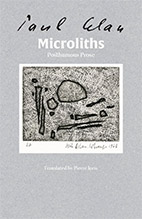 “Paul Celan, Microliths They Are, Little Stones”
“Paul Celan, Microliths They Are, Little Stones”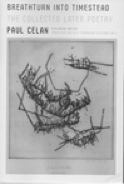 “Paul Celan: Breathturn into Timestead-The Collected Later Poetry.” Translated & with commentary by Pierre Joris. Farrar, Straus & Giroux
“Paul Celan: Breathturn into Timestead-The Collected Later Poetry.” Translated & with commentary by Pierre Joris. Farrar, Straus & Giroux